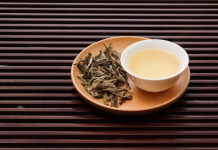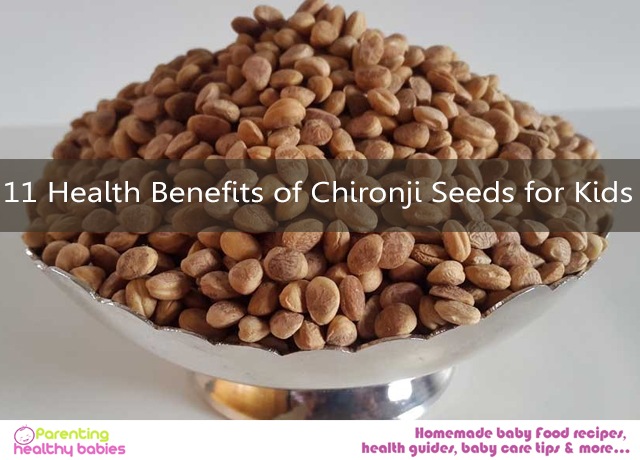The health benefits of lettuce for babies include supply of essential vitamins and minerals, good source of iron for hemoglobin, good source of antioxidants, possesses antimicrobial properties and neuroprotective properties as well.
Lettuce has been eaten for thousands of years now. It was first cultivated by ancient Egyptians more than 4500 years ago. The botanical name of lettuce is lactuca sativa. Ancient Egyptians learned that lettuce was not a weed and cultivated it for its leaves and seed oil. From ancient Egypt, lettuce became a popular plant with the Greeks and Romans. The Romans named it “lactuca” from which the English name lettuce is derived.

In Europe, during the period between 1600s and 1800s, many types or cultivars of lettuce appeared. In the early 1800s lettuce made its way to the Americas along with the immigrants and by the early 20th century, lettuce had become one of the prominent herbs in the market.
The highest production of lettuce takes place in China, followed by the United States, India, Italy, Spain, Japan, Iran, France, Turkey and Mexico. For the year 2010, the world production of lettuce stood at 23.6 million tonnes.
Nutrition in lettuce
According to the National Nutrient Database from the United States Department of Agriculture, the nutrition found in lettuce include
| Nutrition | Value per 100 g | Nutrition | Value per 100 g |
| Water | 94.98 g | Energy | 15 kcal |
| Protein | 1.36 g | Total Lipid (fat) | 0.15 g |
| Carbohydrate | 2.87 g | Fiber | 1.3 g |
| Sugar | 0.78 g | Calcium | 36 mg |
| Iron | 0.86 mg | Magnesium | 13 mg |
| Phosphorous | 29 mg | Potassium | 194 mg |
| Sodium | 28 mg | Zinc | 0.18 mg |
| Vitamin C | 9.2 mg | Thiamin | 0.07 mg |
| Riboflavin | 0.08 mg | Niacin | 0.375 mg |
| Vitamin B-6 | 0.09 mg | Folate | 38 ug |
| Vitamin A | 7405 IU | Vitamin E | 0.22 mg |
| Vitamin K | 126.3 ug |
Can lettuce be fed to babies?
Lettuce, which belongs to the sunflower family, is a simple herb with low calorific value and high in vitamins and minerals. It is regarded as one of the very good herbs that can be given to babies. The juice of lettuce is particularly given to babies to increase speedy development. Lettuce can be introduced to your baby between the age of 6-8 months.
Health benefits of lettuce for babies
Here are some of the health benefits of lettuce for your babies.
Good source of vitamins: As an herb, lettuce has been noted to be one of the very good source of vitamins. Vitamins such as vitamin C, vitamin A, vitamin B complex, vitamin K and vitamin E are found in lettuce. Each of the vitamins is essential for developing and strengthening various activities in an infant’s body. For example, vitamin C is needed to strengthen the immune system, while vitamin A is useful for developing good eyesight and B complex vitamins takes care various activities such as brain development, production of red blood cells, etc.
Good source of iron: Iron is an important mineral that is needed for red blood production. As we know, one of the main components of red blood is the protein hemoglobin. Hemoglobin is essential for survival because it helps in supplying oxygen to the all the organs and all the cells in the body.
Rich source of antioxidants: Studies indicate that lettuce is a rich source of antioxidants. These antioxidants present in lettuce have an important hand in reducing oxidative stress. In the last few decades, new and improved research showed that oxidative stress as the source of many diseases, whose sources were earlier unknown. Antioxidants reduce the action of oxidative stress and keep the organs from oxidative damage and stop the development of diseases. (Noomani, et al, 2013).
Antimicrobial properties: Feeding your baby with fresh lettuce juice or boiled lettuce juice can be beneficial in bringing down the numbers of infectious microbes. Lettuce has been shown to possess antimicrobial properties. Not only bacterial species but also some species of viruses can be controlled by lettuce. (Edziri, et al, 2011).
Neuroprotective properties: One of the major advantages of regular lettuce consumption is that its antioxidant properties are also useful in providing protection of neurons. Neurons are brain cells and they form connections that eventually become memories. Sometimes, loss of memory can mean damage to the neurons. Such damage to neurons can be lessened by giving lettuce to your child on a regular basis. (Sadeghnia, et al, 2012).
Measures to be taken while giving lettuce to your baby
Here are some of the measures that must be taken while giving lettuce to your baby, in order to prevent any untoward incident.
Buy fresh lettuce: As an herb, lettuce must be bought only fresh and consumed fresh. Due to the high water content in the leaves, it is difficult to store lettuce for longer durations like more than 4-5 days. So, lettuce must be consumed as soon as possible after buying them.
How to cook lettuce: As such it is not advisable to offer raw juice of lettuce to your baby, as it might cause allergic reactions and there is a danger of microbial contamination. It is advisable to clean and cook lettuce before giving it to your baby. Lettuce can either be boiled or steamed. But, it would be very beneficial if lettuce is steamed instead of boiled. Boiling in water takes away the necessary vitamins and minerals while steaming preserves the vitamins and minerals.
Allergic reactions: Lettuce is generally not an allergy causing food. But with food, we cannot be absolutely sure. So, if you notice any allergic reactions such as swelling of lips, tongues, or face, vomiting, nausea, hives, etc in your baby, quickly consult your pediatrician. To be sure whether or not your baby has any food allergies, ask your doctor before introducing new foods.












